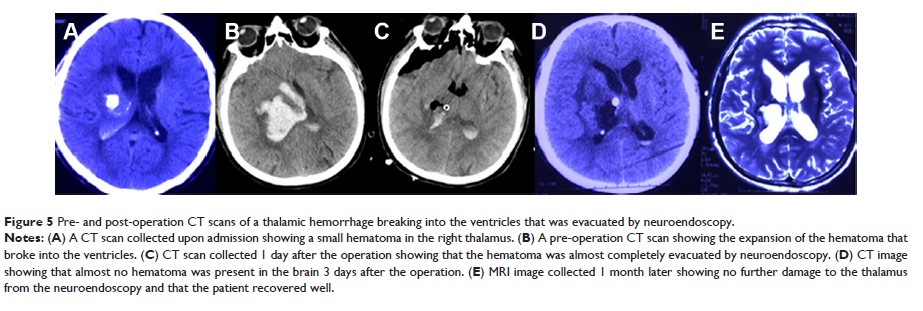9 0 8 1 0
论文已发表
注册即可获取德孚的最新动态
IF 收录期刊
- 2.6 Breast Cancer (Dove Med Press)
- 3.9 Clin Epidemiol
- 3.3 Cancer Manag Res
- 3.9 Infect Drug Resist
- 3.6 Clin Interv Aging
- 4.8 Drug Des Dev Ther
- 2.8 Int J Chronic Obstr
- 8.0 Int J Nanomed
- 2.3 Int J Women's Health
- 3.2 Neuropsych Dis Treat
- 4.0 OncoTargets Ther
- 2.2 Patient Prefer Adher
- 2.8 Ther Clin Risk Manag
- 2.7 J Pain Res
- 3.3 Diabet Metab Synd Ob
- 4.3 Psychol Res Behav Ma
- 3.4 Nat Sci Sleep
- 1.9 Pharmgenomics Pers Med
- 3.5 Risk Manag Healthc Policy
- 4.5 J Inflamm Res
- 2.3 Int J Gen Med
- 4.1 J Hepatocell Carcinoma
- 3.2 J Asthma Allergy
- 2.3 Clin Cosmet Investig Dermatol
- 3.3 J Multidiscip Healthc

经颅神经内镜入路微创清除治疗自发性幕上脑出血
Authors Cai Q, Guo Q, Li Z, Wang W, Zhang W, Ji B, Chen Z, Liu J
Received 20 November 2018
Accepted for publication 19 February 2019
Published 11 April 2019 Volume 2019:15 Pages 919—925
DOI https://doi.org/10.2147/NDT.S195275
Checked for plagiarism Yes
Review by Single-blind
Peer reviewers approved by Ms Justinn Cochran
Peer reviewer comments 2
Editor who approved publication: Dr Jun Chen
Objective: Spontaneous
supratentorial intracerebral hemorrhage (SSICH) is one of the deadliest
diseases, and neuroendoscopic surgery (NE) is a minimally invasive and
promising treatment that might improve the functional recovery of patients.
This study analyzed patient’s experience with this treatment in terms of
safety, efficacy, and surgical technique.
Patients and methods: Forty-two
patients with SSICHs treated by transcranial neuroendoscopic approach were
retrospectively reviewed from June 2016 to July 2018 in our department.
Patients were classified into four groups according to the main location of the
hematoma on CT scans: Group A (basal ganglia hemorrhage), Group B (subcortical
hemorrhage), Group C (thalamic hemorrhage), and Group D (intraventricular
hemorrhage [IVH]). The clinical data were collected, and the outcomes were
analyzed.
Results: All
procedures were successfully completed, and no patient died in the
perioperative period. The average hematoma evacuation rate was 90.1%, and the
highest hematoma evacuation rate was achieved in Group B which was 92.7%. No
severe complications occurred, and the average GCS score improvement was 4.0 at
discharge.
Conclusion: These
data suggest that evacuation hemorrhage by neuroendoscopy might be an effective
and safe approach for SSICH. For better efficiency of this treatment, some
details needed to be emphasized, such as setting up a good working channel,
using of suction and bipolar forceps accurately.
Keywords: supratentorial
intracerebral hemorrhage, transcranial neuroendoscopic approach, minimally
invasive surgery
